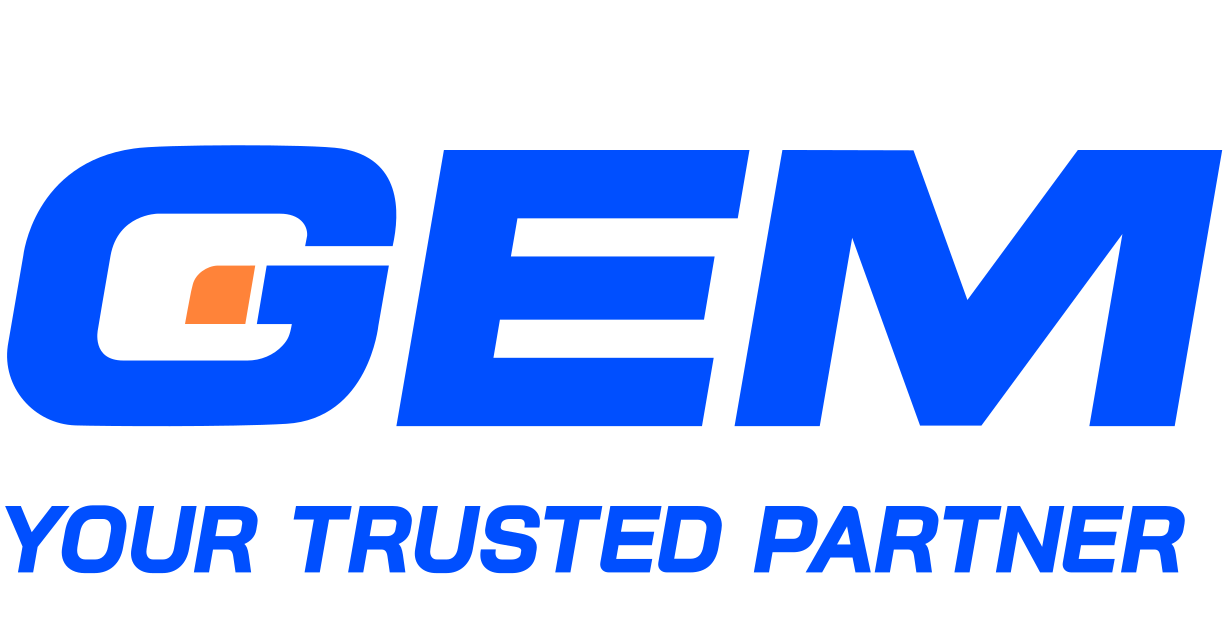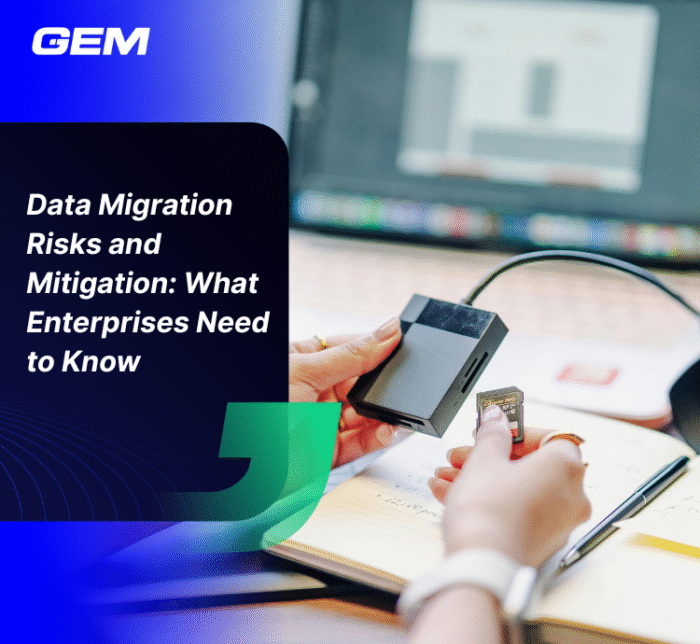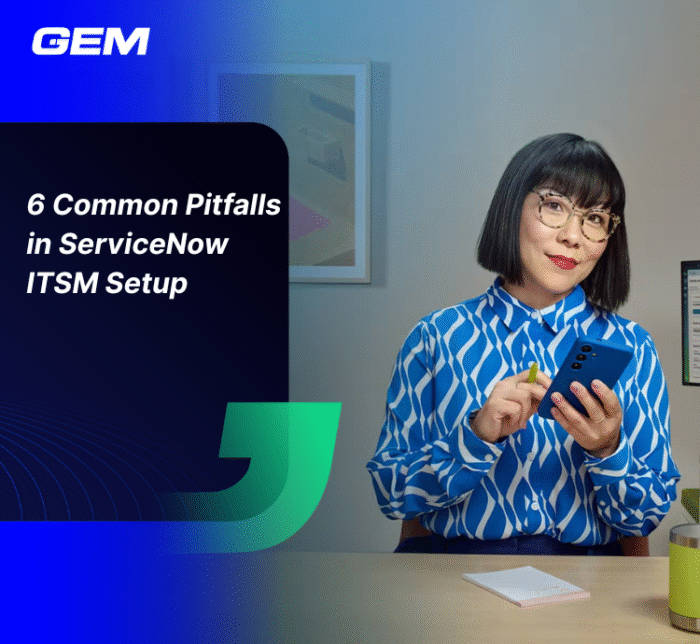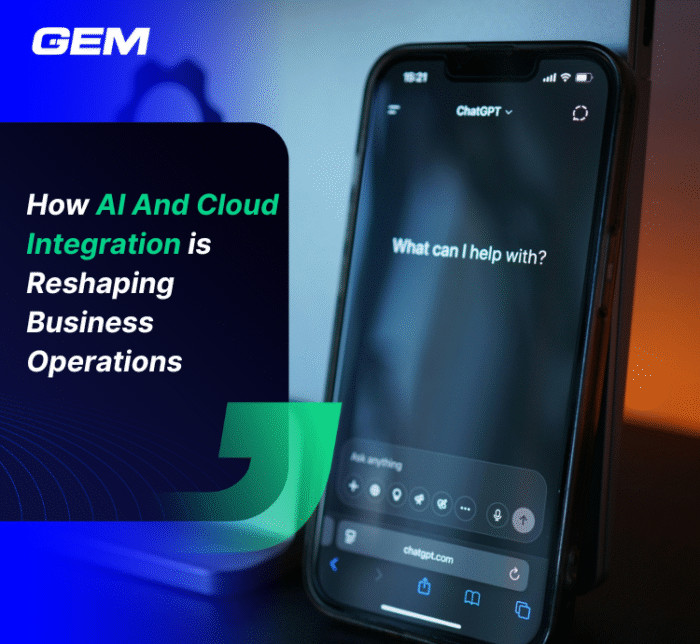Contents
- What is Azure Cloud?
- What is Google Cloud?
- Why Enterprises Are Migrating to Azure and GCP
- When Is Migration the Right Move?
- Types of Cloud Migration Strategies
- What Azure Cloud Migration Services & Google Cloud Migration Services Cover?
- Best Practices for a Successful Cloud Migration in 2025
- Final Considerations: Azure vs. GCP – Choosing What Fits
- Migrating with GEM Corporation’s Cloud Migration Services
- Conclusion
By 2025, 85% of organizations are expected to complete a cloud-first transition. Today, 94% already rely on cloud infrastructure, storage, or software in some form. As demand grows, Azure Cloud Migration Services are becoming a central part of enterprise strategy, shaping how teams modernize systems, manage data, and run AI workloads at scale. This guide outlines what migration looks like in 2025, why companies are choosing Azure or Google Cloud, and how to approach the transition with clarity. We’ll also cover service scopes, migration types, and practical steps for getting it right. Let’s look at where the shift is happening and why.
What is Azure Cloud?
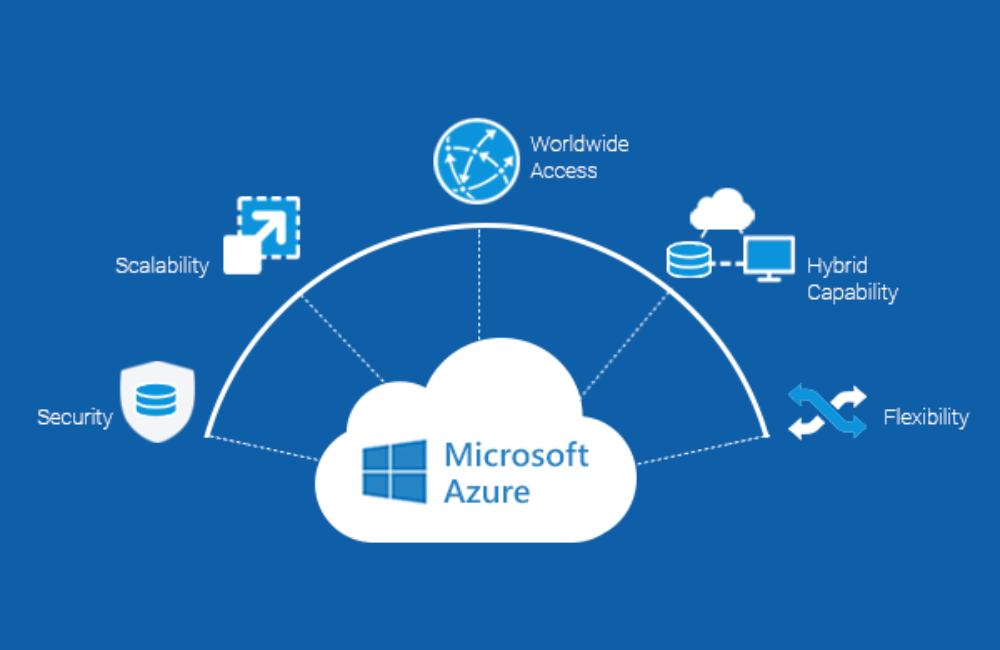
Azure is Microsoft’s cloud computing platform, offering a wide range of integrated services that help businesses build, run, and manage applications across a global network of data centers. It supports a broad spectrum of enterprise needs, from virtual machines and serverless computing to advanced analytics and AI, making it a strategic foundation for digital operations at scale.
Core Offerings and Market Positioning
Azure’s services are structured to support both foundational infrastructure and advanced workloads. Its depth and breadth make it one of the top choices among enterprises adopting hybrid, multi-cloud, or AI-driven architectures.
Compute Services
Azure provides flexible compute options, including Virtual Machines (VMs) for traditional workloads, Azure Kubernetes Service (AKS) for containerized environments, and Azure Functions for serverless execution. These tools support a wide range of architectures—from lift-and-shift to cloud-native.
Storage Services
Azure offers multiple storage solutions, such as Blob Storage for unstructured data, File Storage for SMB protocol-based access, and Disk Storage for high-performance virtual machines. These services are designed for scalability, redundancy, and integration with analytics and backup tools.
Database Services
Azure supports both relational and non-relational databases. Azure SQL Database is a fully managed relational DBaaS, while Cosmos DB provides globally distributed NoSQL capabilities with low-latency access and multi-region writes.
Networking Tools
Azure’s networking stack includes Virtual Networks (VNets) for segmentation, Load Balancers for traffic distribution, VPN Gateways for secure connectivity, and Azure CDN for content delivery. These services enable secure and performant cloud environments.
AI and Machine Learning
Azure Machine Learning and Cognitive Services offer tools for model development, training, and deployment. These services support both pre-trained models and custom development, with integrations across Azure’s broader data and compute ecosystem.
IoT Services
Azure IoT Hub and Azure Digital Twins allow businesses to connect, monitor, and manage IoT assets. These services are used in manufacturing, logistics, energy, and smart infrastructure, supporting real-time telemetry and decision systems.
DevOps Tools
Azure DevOps includes services for CI/CD, version control, agile planning, and artifact management. It integrates with both Microsoft and open-source ecosystems, helping teams ship software faster and more reliably.
Integration with Microsoft Enterprise Stack
Azure is tightly integrated with Microsoft’s broader suite of enterprise tools. It works natively with Office 365, Dynamics 365, and Power Platform, creating a unified environment for identity, data, and workflows. Azure Active Directory provides centralized identity management across these services, while tools like Power BI and Logic Apps bridge data access and automation.
Recent Developments Shaping Azure’s Roadmap
Microsoft is investing heavily in AI infrastructure, aiming to support both its own models and third-party offerings like OpenAI’s. Azure is also expanding its hybrid capabilities through Azure Arc, allowing organizations to manage resources across on-premises, multi-cloud, and edge environments. In parallel, sustainability, industry-specific clouds, and confidential computing are gaining visibility on the roadmap, reflecting evolving enterprise priorities.
What is Google Cloud?
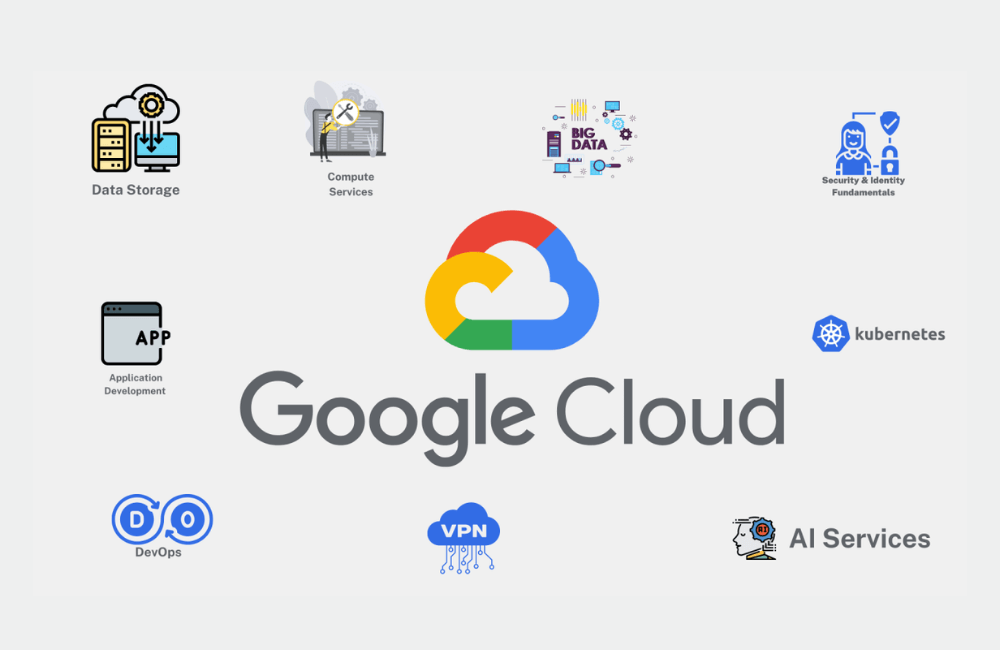
Google Cloud Platform (GCP) is a suite of cloud computing services offered by Google that provides infrastructure, platform, and software services, including virtual machines, storage, data analytics, and machine learning, all available on a global network of data centers. Users pay for the resources they consume on a flexible, pay-as-you-go model, allowing businesses to scale resources up or down easily based on demand.
GCP is built on Google’s global infrastructure of data centers, which are organized into regions and isolated zones. These resources are accessed and managed by customers through the internet, enabling them to host applications, store data, and run complex computing tasks without owning the physical hardware.
Architecture and Differentiators
Google Cloud is architected to support high-performance computing and large-scale data processing while prioritizing developer experience, AI workloads, and sustainability. Its infrastructure emphasizes low-latency networking, global redundancy, and seamless workload portability, especially across hybrid and multi-cloud environments.
A defining characteristic of GCP is its commitment to open-source tooling and interoperability. Technologies like Kubernetes (originally developed by Google), TensorFlow, and Apache Beam reflect this philosophy, making GCP a natural fit for engineering-driven organizations.
Key Features & Services
Compute Engine
Enables users to create and manage virtual machines on demand, offering customizable configurations and automatic scaling for compute-heavy applications.
Cloud Storage
Provides unified object storage for structured and unstructured data, supporting lifecycle policies, encryption, and multi-region availability.
Data Analytics & Machine Learning
BigQuery delivers serverless analytics at scale, while Vertex AI integrates model development, training, and deployment into one platform. Google’s TPUs offer accelerated performance for training deep learning models.
Databases
Services like Cloud Spanner and Firestore support globally distributed applications with high availability and strong consistency, removing the burden of manual database tuning and scaling.
APIs and Developer Tools
GCP includes a range of APIs for building and managing services, including geospatial APIs (Maps, Routes, Places) and API Gateway for central management and security.
Google Workspace
A productivity suite that includes Gmail, Drive, Docs, and Meet integrated into cloud-native workflows and managed through a unified admin console.
Emphasis on Data, AI, and Open-Source Tooling
GCP’s platform is designed for data-intensive workloads. With native support for advanced analytics and machine learning, it enables teams to move from raw data to production-grade AI models at speed. GCP also supports a wide range of open-source frameworks and APIs, encouraging flexibility over vendor lock-in.
GCP’s Role in Developer-First and Sustainability-Focused Strategies
GCP is often seen as the platform of choice for developer-led teams, thanks to its open tooling, accessible APIs, and strong support for containerized workloads. Its sustainability model is also a differentiator – Google matches 100% of its cloud energy use with renewable energy purchases and continues to invest in carbon-free operations. This makes GCP appealing to organizations with environmental, social, and governance (ESG) targets embedded in their technology roadmap.
Why Enterprises Are Migrating to Azure and GCP

Enterprise migration to Azure and Google Cloud is accelerating in 2025, driven by strategic priorities that reflect both technical demands and business model shifts. These platforms offer the scale, performance, and flexibility many organizations now require to stay competitive.
Operational Flexibility
Both Azure and GCP support hybrid and multi-cloud architectures, giving enterprises the ability to deploy workloads across regions, manage environments centrally, and respond quickly to shifting requirements. This flexibility is especially relevant for global organizations managing disparate systems or supporting edge deployments.
Cost Control and Dynamic Scaling
Cloud-native infrastructure enables businesses to align IT spend with actual usage. Azure and GCP offer granular pricing models, autoscaling, and resource scheduling, helping organizations manage variable workloads without overprovisioning. For companies focused on margin discipline, this model adds transparency and precision to infrastructure spending.
Security, Compliance, and Geopolitical Considerations
As compliance requirements evolve and data sovereignty laws tighten, hyperscalers are adapting. Azure and GCP offer compliance certifications across regulated sectors, region-specific data residency options, and secure cloud architectures. This makes them attractive to organizations operating in financial services, healthcare, and public sector environments.
Consolidation of AI/ML Workloads
AI is now a core workload, not an experimental one. Azure and GCP have invested heavily in AI infrastructure, supporting both proprietary models and open-source frameworks. For enterprises moving from fragmented toolchains to centralized platforms, these clouds offer the compute capacity, model lifecycle tools, and enterprise-grade APIs to support scaled deployments.
When Is Migration the Right Move?

Timing a cloud migration depends less on industry norms and more on internal signals. Several technical and structural triggers often indicate when a shift to Azure or GCP should be on the table.
Signs of Infrastructure Strain
Systems showing degraded performance, limited scalability, or rising maintenance overhead may signal the need to modernize. In many cases, on-premise environments are unable to support real-time data processing or high-throughput AI workloads now common in enterprise settings.
Shifts in Business Model or Product Architecture
If an organization is moving toward SaaS delivery, embedded AI, or globally distributed applications, legacy infrastructure often becomes a constraint. Cloud migration supports modularity, speed-to-market, and integration with modern development practices.
M&A Activity or Regional Expansion
Mergers, acquisitions, and new market entry typically require faster IT integration and scalable infrastructure. Migrating to Azure or GCP can standardize environments across business units, reduce duplication, and streamline post-M&A operations.
Cost-Performance Imbalance
When infrastructure costs rise without a corresponding gain in performance or flexibility, a migration can restore balance. Cloud platforms offer the ability to right-size compute and storage based on actual usage, and they provide visibility into cost drivers through native monitoring tools.
Types of Cloud Migration Strategies
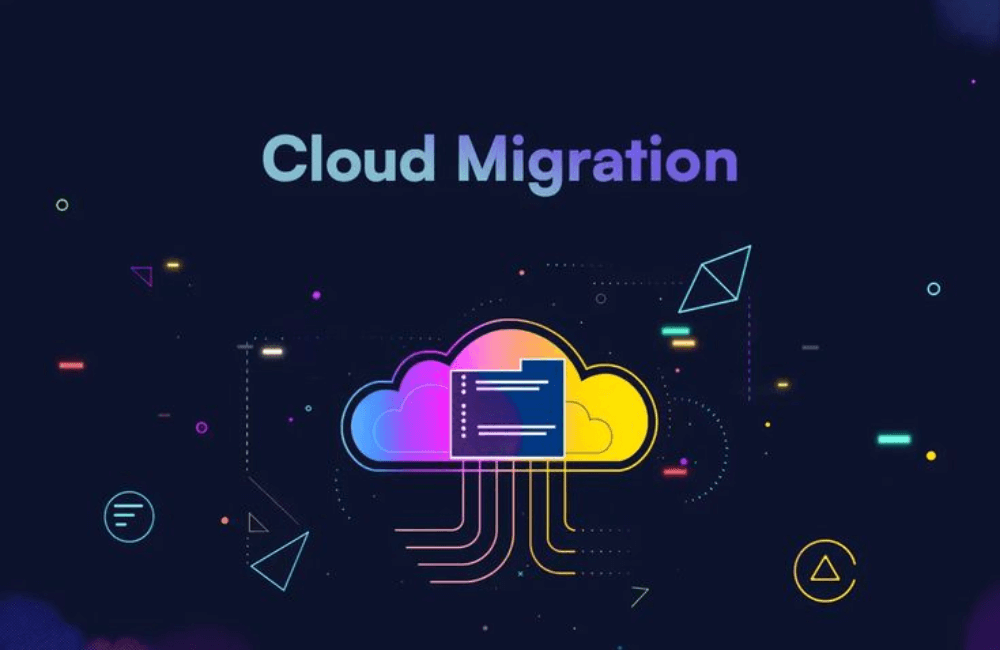
Choosing the right migration approach depends on business objectives, technical debt, and application complexity. Azure and Google Cloud support a range of migration strategies, each offering a different balance of speed, customization, and long-term scalability.
Rehost (Lift and Shift)
This approach moves applications to the cloud with minimal or no code changes. Organizations often use it to meet tight timelines or avoid upfront reengineering. While fast to implement, rehosting does not take full advantage of cloud-native capabilities.
Refactor (Code-Level Changes)
Refactoring involves modifying parts of the application to better align with cloud services. This may include replacing components with managed services or reworking code to improve scalability and maintainability. It strikes a balance between quick migration and improved performance.
Rearchitect (Platform Overhaul)
This strategy involves redesigning applications to meet new business needs or technical requirements. It often includes decoupling monoliths into microservices or adopting container orchestration platforms. Though resource-intensive, rearchitecting can set the foundation for long-term agility.
Rebuild & Replace (Greenfield Development)
In some cases, legacy systems are replaced entirely with new, cloud-native applications. This is common when existing systems no longer support business goals or are too costly to maintain. While this approach demands the most upfront investment, it offers the highest degree of flexibility and future readiness.
What Azure Cloud Migration Services & Google Cloud Migration Services Cover?
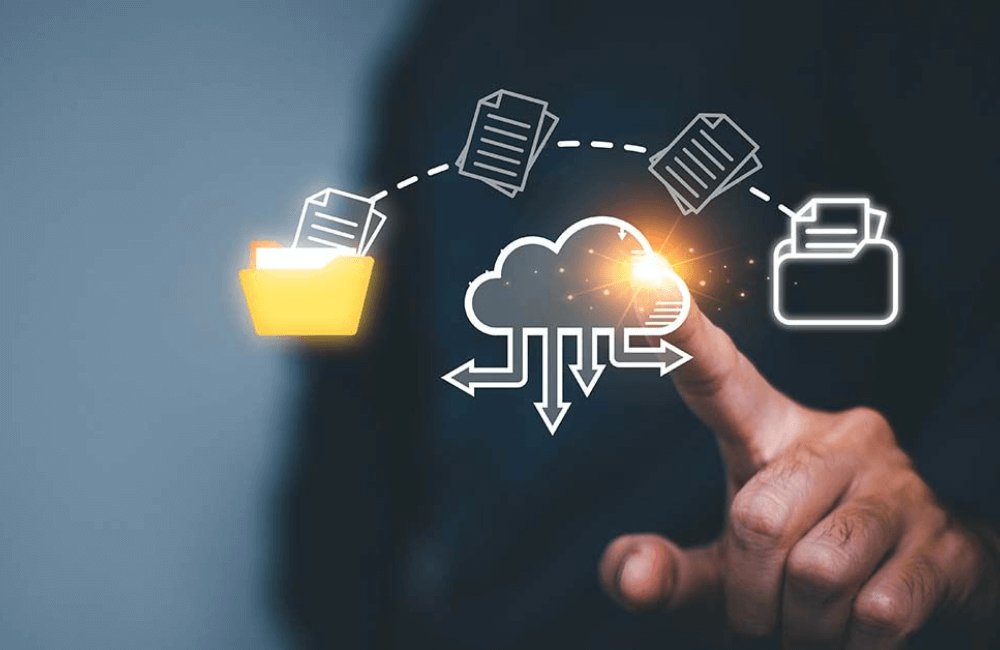
Both Azure and Google Cloud offer structured migration services that align with enterprise priorities, from readiness assessment through to long-term optimization. While the tools and frameworks differ, the core focus areas are consistent.
Discovery and Assessment
This phase involves analyzing the current IT environment to identify workloads suitable for migration. Tools like Azure Migrate and Google Cloud’s Migration Center help inventory assets, estimate costs, and assess dependencies to inform strategy.
Architecture Planning
Based on assessment findings, teams define a target architecture suited for the selected cloud. This includes selecting appropriate services, designing network topology, and aligning with security and compliance requirements.
Data and Application Migration
This stage covers the actual transfer of applications, workloads, and databases to the cloud. Services such as Azure Database Migration Service and Google Cloud’s Migrate for Compute Engine automate parts of the process, reducing downtime and risk.
Post-Migration Optimization
Once workloads are live in the cloud, optimization focuses on performance tuning, cost alignment, and service integration. This may involve rightsizing resources, enabling autoscaling, or adopting managed services to replace self-hosted components.
Governance and Cost Monitoring
Both platforms provide tools to track usage, manage access, and control spend. Azure Cost Management and Google Cloud Billing offer real-time visibility into consumption patterns, while governance tools support policy enforcement and audit readiness.
Best Practices for a Successful Cloud Migration in 2025
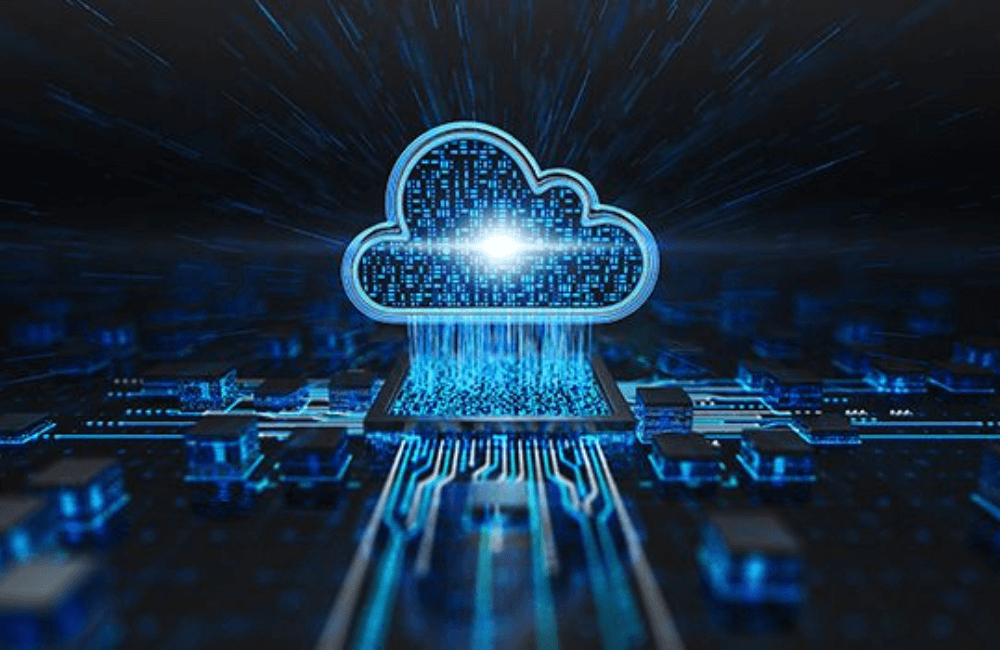
Enterprises that approach cloud migration with structure and transparency tend to see stronger results in performance, cost alignment, and operational control. The following practices are helping organizations execute migration programs with greater confidence.
Prioritize Workloads Based on Business Value
Not all workloads require the same urgency or transformation. Start with applications that are either high-impact or underperforming in their current environment. This approach ensures early wins and helps build organizational momentum.
Align Migration with Product Roadmaps and Team Structure
Migration timelines should reflect broader business and product plans. Teams responsible for application delivery should be involved early, with clear roles across development, operations, and architecture. This alignment reduces friction during execution and simplifies future scaling.
Use Pilot Migrations to De-Risk Complexity
Piloting a representative workload helps validate assumptions about compatibility, cost, and performance. It also exposes operational gaps, such as missing observability, access controls, or integration dependencies, before executing at scale.
Invest in Observability and Cost Insight Tools
A successful migration is not just about moving workloads, but also about understanding how they behave in the new environment. Azure and GCP both offer native tools for monitoring, logging, and cost tracking. Incorporating these from day one helps teams detect issues early and avoid overspending.
Build Cross-Functional Accountability (Ops, Dev, Finance)
Migration intersects with infrastructure, application development, and budgeting. Establishing shared KPIs and review cadences across departments improves coordination. It also ensures that trade-offs, such as performance vs. cost, are considered in context.
Final Considerations: Azure vs. GCP – Choosing What Fits

Both Azure and Google Cloud offer secure, scalable platforms with rich service portfolios. The decision often comes down to existing technology investments, technical priorities, and operating model.
When Azure May Be a Better Fit
– Organizations already using Microsoft services like Office 365, Dynamics, or Windows Server
– Enterprises with strong enterprise IT governance and hybrid requirements
– Teams prioritizing integration with Active Directory and .NET-based applications
When GCP May Offer an Advantage
– Data-driven teams focused on AI/ML, advanced analytics, or platform engineering
– Organizations committed to open-source ecosystems and developer-led operations
– Environments where sustainability and carbon reporting are high priorities
How Multi-Cloud or Phased Migration Can Mitigate Lock-In
A growing number of enterprises are adopting multi-cloud strategies to balance capabilities and avoid dependency on a single provider. Azure and GCP both offer tools to support hybrid deployments, making it feasible to migrate in phases or distribute workloads based on technical fit.
Summary Table: When to Choose Azure or GCP
| Criteria | Azure | Google Cloud (GCP) |
| Existing Tech Stack | Best for Microsoft-centric IT | Best for open-source and API-first |
| AI and ML Workloads | Strong, with integration to OpenAI | Advanced, with Vertex AI and TPUs |
| Data Analytics | Integrated with Power BI, Synapse | BigQuery and serverless analytics |
| Hybrid Cloud Support | Strong via Azure Arc | Supported via Anthos |
| Developer Ecosystem | Suited to enterprise IT workflows | Suited to developer-led environments |
| Sustainability Focus | Improving | High priority in platform design |
| Cost Visibility and Governance | Azure Cost Management | Google Cloud Billing and FinOps API |
Choosing between Azure and GCP is rarely binary. For many enterprises, the right approach involves using the strengths of each platform where they align best with business needs.
Migrating with GEM Corporation’s Cloud Migration Services
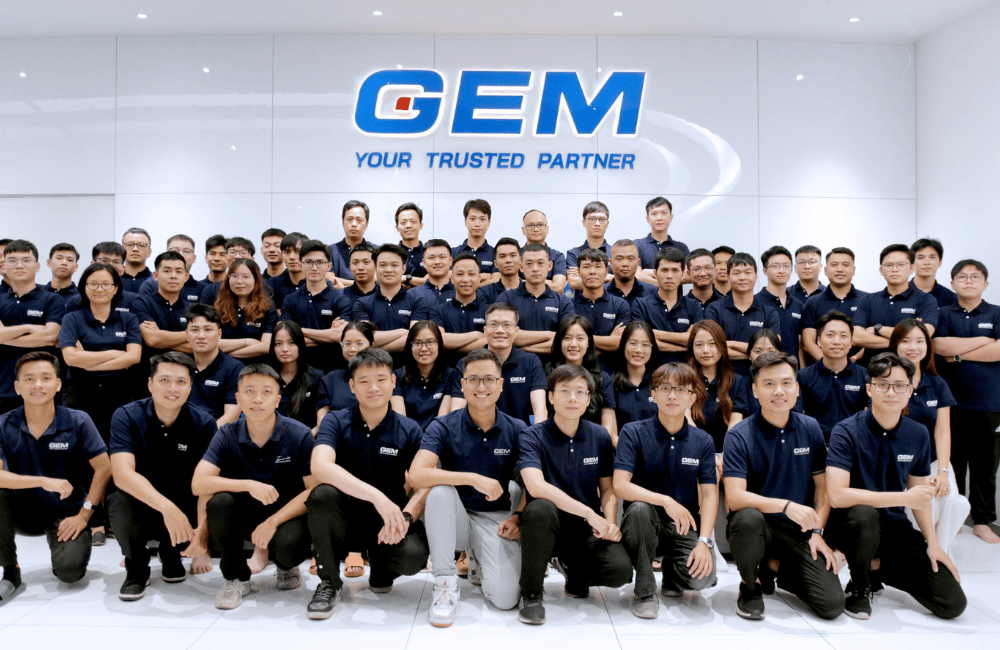
GEM Corporation is a trusted IT service provider with a global footprint and over 500 technology professionals and consultants. Recognized in the 2024 Clutch 100 and multiple ITO awards, GEM brings a strong track record in digital transformation for our global clients. The company operates under ISO-certified and CMMI-appraised delivery processes, offering flexible engagement models and round-the-clock technical support. With deep expertise across industries, including BFSI, healthcare, telecom, logistics, and manufacturing, GEM delivers migrations that align with both operational needs and strategic goals.
GEM’s cloud migration services combine structured assessment, secure execution, and post-migration optimization. The process starts with a detailed evaluation of existing infrastructure to design a strategy aligned with business goals. Applications, databases, and workloads are migrated with full data integrity, while infrastructure is modernized using cloud-native technologies. Security, compliance, and cost control are embedded throughout, backed by ongoing support to keep cloud environments efficient, scalable, and aligned with evolving demands.
Explore more:
Conclusion
Enterprises moving to the cloud in 2025 are prioritizing flexibility, cost alignment, and AI-readiness, and Azure cloud migration services are central to that shift. Whether rehosting legacy systems or rearchitecting for long-term scalability, success depends on aligning strategy with business value, piloting migration paths, and maintaining visibility into cost and performance. With structured support from providers like GEM Corporation, organizations can navigate complexity while positioning themselves for operational agility. For companies evaluating Azure or Google Cloud, a phased or hybrid approach offers a practical path forward, balancing technical fit with long-term adaptability in a rapidly evolving digital landscape.
